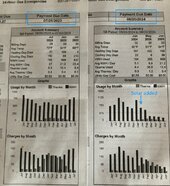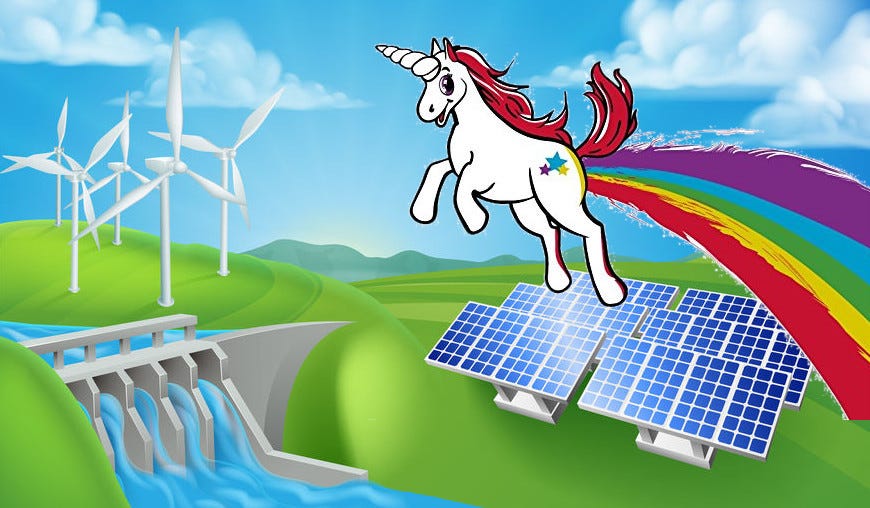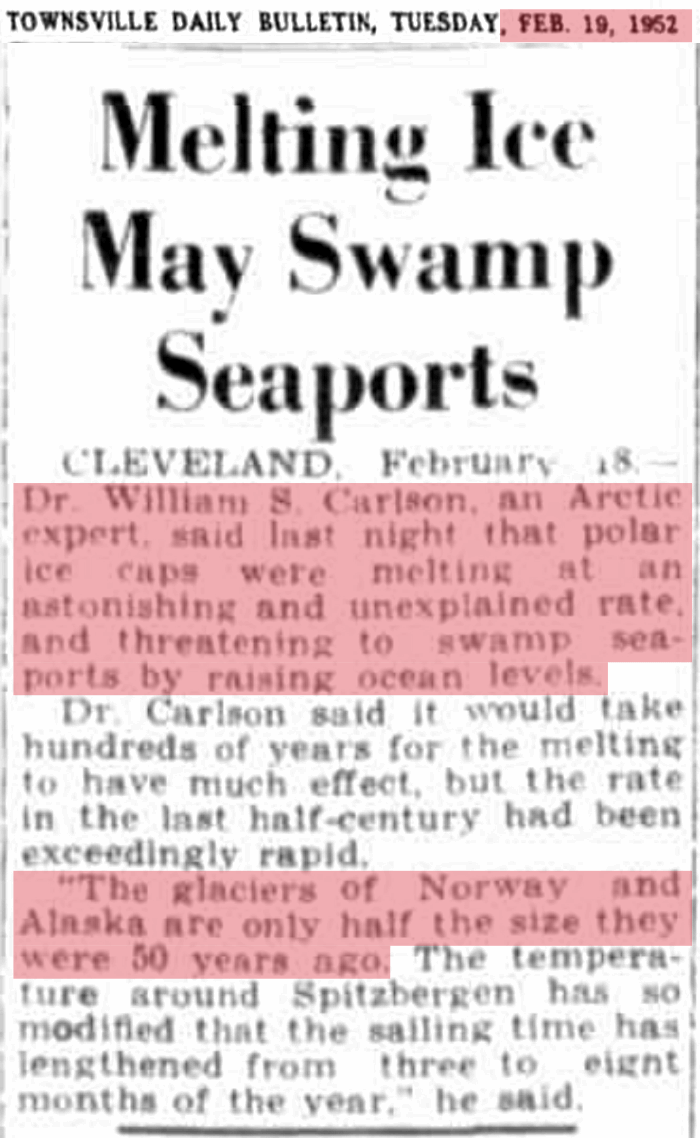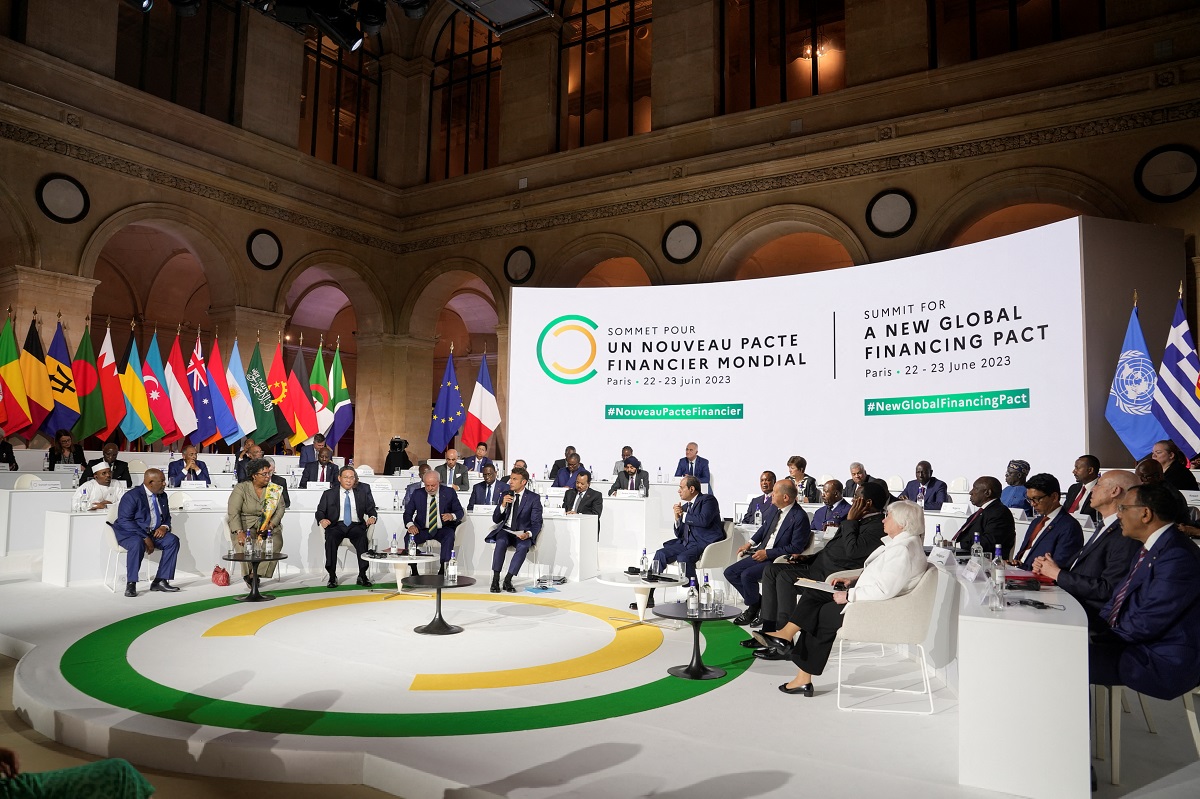TommySr
Solar Enthusiast
B-ManFX4, looks like you are using a Victron Autotransformer, 32A
do you know the idle current draw of the split phase transformer?
do you know the idle current draw of the split phase transformer?
I do not. I have not measured it. My RV is in storage mode. Next time I energize it I will try to get a measurement. That is a great question that I am embarrassed to say I never gave any consideration to.B-ManFX4, looks like you are using a Victron Autotransformer, 32A
do you know the idle current draw of the split phase transformer?
Agreed, but I don't see them as "fight the things that can be changed", more like fighting to not change. ; -)At some point you have to accept the inevitable .... The world IS heading toward a sustainable energy future ..... fight the things that can be changed...Our future IS going to be dominated by technology
Ideally all the plans that get executed are sensible regardless of anything else. The best plans are the ones that accomplish the goal and save us money. If it isn't doing that, then we should be questioning it. It's why I like electrification and dislike capturing carbon from the air, that's a new cost... and one I'm not sure is needed now that I know methane removal can do more faster (and there's a lot of low hanging fruit like fixing leaky pipes).I'd much rather get on board with a sensible plan that omits all the crazy climate agenda stuff we hate so much .....
It should make you furious. Carbon Credits should go as they don't work. Fortunately only California, Washington, and the Northeast states adopted them. The next time an environmentalist or believer is waiving it at you point them to Carbon Offsets Don't Work. Here's Why....required to purchase scam carbon credits auction style. Without these scam credits they cannot do business in wa. ... Makes me furious.
I came to the same conclusion: that we need to do more than just have a battery break-though. But, it looks like that can be plugged with some methane mitigation....Can Solar & Wind Fix Everything (e.g., Climate Change) with a battery break-through?" NO !!!! Solar and wind cannot come close to replacing fossil and nuclear fueled plants. The gap is too gigantic.
| Solar and wind have both been cheaper than fossil fuels for nearly a decade. The sticking point has always been night-time energy rather than base-load. As @Bongbong said, Lazard's now reports that renewables with energy storage are on par with fossil fuels. See image right. That's why you see record growth in renewables in the U.S., the EU, China, and other places. Capitalism wins. ; -) But don't expect cheaper prices for electricity. It's from private investors and they expect a return on their investments. |
|


Fortunately for me, a user yclept @Roadshow11235 gave me a link to something I’d never seen, an analysis of those very costs. So let me lay them out for you.I am SOOO tired of people using the Lazard’s Levelized Cost of Energy to directly compare say solar vs gas or wind vs coal.
The Lazard folks themselves say (emphasis mine)
“Direct comparisons to “competing” renewable energy generation technologies must take into account issues such as dispatch characteristics (e.g., baseload and/or dispatchable intermediate capacity vs. those of peaking or intermittent technologies).”
It’s not optional, so unless you’re taking those issues into account, you are LYING ABOUT RENEWABLES.
w.
Figure 1. Original April 2023 Lazard Levelized Cost Of Energy (LCOE)



A recent cost comparison by Lazard showed that solar and wind combined with batteries is often cheaper than fossil fuels and nuclear. With prices expected to fall even further, I don't see how we can avoid switching to solar and wind without government intervention even if we wanted to.
Part of the state has received record-breaking rainfall. But in drought-stricken west Texas, parched soil is blowing away.
| Will says the Cybertruck is a piece of junk. But I don't know... given all the flooding here maybe there's a niche market? ; -) There's actually quite a few amphibious EVs, not that I can afford one. Maybe DIY one? 
|
Scientists found a power source with negative carbon emissions
Opinion: More on algae, video...
How farming could become the ultimate climate-change tool
A stark divide in Texas
Will says the Cybertruck is a piece of junk.
But I don't know... given all the flooding here maybe there's a niche
market? ; -)
There's actually quite a few amphibious EVs, not that I can afford one.
Maybe DIY one?


Thread Recap
This thread has been a journey. I started off as a skeptic/denier, but bad science is usually debunked after a decade and the whole topic of climate change had been around far too long not to give it a second look with an open mind. So I open Bill Gate’s book How to Avoid a Climate Disaster and saw problems. Bill's book was not the type of book I was looking for, but it did raise questions. Along the way, I looked hard at the science, and saw that Global Warming really was a significant issue.
The biggest issue I had with Bill's book is it seemed reasonable to me that an energy storage solution (e.g., a battery) could be tied with wind and solar to resolve the crisis and the rest of it was noise, so I started this thread to see what others thought. From the OP it seemed ESS could get us all but about 28%.
Mainly I've been a proponent of a low-cost ESS solution (seems very feasible) because it would make wind and solar the lowest LCOE providers, and our natural capitalism steak could have the pro-climate people less concerned and reduce costs for everyone. That is a win-win.
But that lingering 28% was still a lot if climate change was something to worry about.
Planting more trees didn't seem like the answer (#8). So I went looking for other books and not finding anything started doing some research and posting the findings for discussion as I had a lot of questions in terms of the validity of the science. That starts at post #9, based on the half-life of GreenHouse Gases (GHGs), and recognizing the buildup I started changing my tune and seeing the value of net-zero. But I still had a lot of questions and the thread hit many subtopics:

 economicprism.com
economicprism.com

 wattsupwiththat.com
wattsupwiththat.com
 www.corbettreport.com
www.corbettreport.com

 wattsupwiththat.com
wattsupwiththat.com

 www.minds.com
www.minds.com

 wattsupwiththat.com
wattsupwiththat.com



 alt-market.us
alt-market.us


 wattsupwiththat.com
wattsupwiththat.com








Worth reading in full.Exporters in China and Malaysia are using virgin palm oil instead of recycled cooking fat to make sustainable aviation fuel (SAF), research from lobby group Transport & Environment (T&E) suggests.
This means that rather than reducing CO2 emissions, the drive to adopt SAF may instead be driving deforestation.
SAF accounts for just 0.2% of total jet fuel use, although the British Government has ordered U.K. airlines to lift that proportion to 10% by the end of the decade.
Cooking oil forms the basis for 80% of the world’s SAF, making old chip fat a valuable commodity.
However, unscrupulous suppliers are seeking to turn a profit by cutting out the kitchen altogether and shipping virgin palm oil to unwary refiners and airlines.
Malaysia is the worst offender, according to T&E, as campaigners cast doubt over the country’s claims that it exports three times more used cooking oil than it collects.
Last year Britain secured almost 30% of its SAF from oil shipped from Malaysia.
Cian Delaney, the group’s biofuels campaigner, said: “With Malaysia being one of the world’s largest palm oil producers, it would heavily indicate that used cooking oil is simply a backdoor for palm. Fraud is almost certainly happening at a mass scale.”
China also appears to be engaged in cooking oil fraud, T&E said.
While figures on the collection and export of oil appear to match, China has a large market for “gutter oil” that is illegally resold for cooking.
Taking that into account, there are “strong suspicions” that some exports include virgin vegetable oil mislabelled as waste oil.
I would include fake meat in that list of highly processed foods that are REALLY bad for you.Then there's all the new technology that no one told you was new technology and is bad for you and we don't find out until years later (e.g., PFAS, gasoline additives, changes to cooking oils that make them cheaper, easier to cook with, and very bad for the body).
The FDA has approved them, so I don't know that they can be "really" bad, I suspect they can be as bad as other stuff (e.g., bread, vegetable oil). What I've seen is that they've nailed the macro ingredients, taste, and texture down. But prices are only on par and there are a number of micronutrient differences. Which doesn't mean good or bad, just different.I would include fake meat in that list of highly processed foods that are REALLY bad for you.
Thanks Bob! As I recall it's a very hard topic to research. It's not just that there are tons of opinions and different players with stakes in the game muddying the waters with misinformation. It's also that the science of fake-meat takes huge leaps, so anything from two years ago is probably wildly out of date. It's also difficult to compare to existing foods (e.g., beef causes cancer, cardio issues, etc.) as scientific studies are numerous and varied. For example, it wasn't long ago that the egg industry almost went under because of the knee-jerk OMG! Eggs have cholesterol! Fast forward to today and it seems the opinion is they are healthy to eat.I saw an article about that a while back and will link it if I see it again.
Master Plan 3 is about electrification. That's sort of what the thread is about... does electrification get us to net zero? The answer seems to be no, but that's only important to those that believe in climate change.Tesla ..... I don't remember them saying anything about the necessity of moving to fake meat.
Science isn't "force"; the only reason why there is controversy is the mountain of misinformation. There is zero rational to disbelieve climate change. I know, saying that just makes you want to prove me wrong. ; -)Trying to force this kind of thing is why so many people won't even consider jumping on board with a plan for "green" energy ....
That's because the plan is an economical approach to sustainable energy. It bypasses the issue of if there is a climate crisis or not and shows electrification makes sense to do all on it's own.... I don't remember them making a single reference to GHG in the presentation of their plan ...
Crisco appeared to be a no brainer alternative to butter or tallow .... It took way too long for the "science" to figure out it was a killer and those natural products are a LOT better for you.The FDA has approved them, so I don't know that they can be "really" bad, I suspect they can be as bad as other stuff (e.g., bread, vegetable oil). What I've seen is that they've nailed the macro ingredients, taste, and texture down. But prices are only on par and there are a number of micronutrient differences. Which doesn't mean good or bad, just different.
Vat-grown fake meat seems to be nutritionally on par regarding the macro/micro nutrients, no surprise there I guess. But they have a long way to go on price AFAIK.
Pretty sure if China and India were "electrified" we wouldn't have a GHG problem. Still time to not have to do a re-do with India.Thanks Bob! As I recall it's a very hard topic to research. It's not just that there are tons of opinions and different players with stakes in the game muddying the waters with misinformation. It's also that the science of fake-meat takes huge leaps, so anything from two years ago is probably wildly out of date. It's also difficult to compare to existing foods (e.g., beef causes cancer, cardio issues, etc.) as scientific studies are numerous and varied. For example, it wasn't long ago that the egg industry almost went under because of the knee-jerk OMG! Eggs have cholesterol! Fast forward to today and it seems the opinion is they are healthy to eat.
Master Plan 3 is about electrification. That's sort of what the thread is about... does electrification get us to net zero? The answer seems to be no, but that's only important to those that believe in climate change.
We'll never be a GHG-free society. The trick is to be net-negative for a while and then go to net-zero. So, to be net-zero we need more than electrification. There's a lot of low hanging fruit with methane (e.g., leaky gaslines, biologicals in dumps) and a lot with soil NOx that can be done. That might get us far enough long that we don't need the Fossil Fuel solution (e.g., a carbon tax to pay for CO2 capture and sequestration).
Fake and synthetic meat is a topic in this thread as they have a significantly lower carbon footprint than their fauna sources. I don't have a link to the post handy, but hopefully it was shown prior that even the worse case Carbon-capture per pound of beef was negligible. There are also numerous other low cost ways to decrease emissions from cows.
Science isn't "force"; the only reason why there is controversy is the mountain of misinformation. There is zero rational to disbelieve climate change. I know, saying that just makes you want to prove me wrong.
It's rarely even new misinformation, it's all been debunked multiple times. Here's a video from six years ago that talks about the common myths, things even you've brought to the thread. The problem seems to be that deniers/skeptics don't bother to research both sides, they just look for an argument that supports their point of view and go full-stop, feeling confident that anything that doesn't fit or whatever anyone else is telling them is bamboozled or on the take. Real science looks at all the facts and continually evolves.
That's because the plan is an economical approach to sustainable energy. It bypasses the issue of if there is a climate crisis or not and shows electrification makes sense to do all on it's own.
All the "big" stuff that's happening that's good for the climate; it's being done because it makes economic sense. It's a climate change believer victory for those that were early adopters that helped drive the costs down (e.g., those that bought EVs and drove battery costs down) to pave the way for everything else.
Electrification takes a long way. But we need more a bit more. There's a lot of basic research funded by the government and folks like Bill Gates in regards to nuclear, CO2 free steel and concrete, cleaning up emissions from dumps, etc. They won't all be winners, but new technologies do sometimes show a better / cheaper way of doing something. Highlighting a problem and showing it really is an urgent crisis will get minds working on real solutions.
We didn't stop burning so much coal to reduce climate change. It was because fraking make gas cheaper than coal. It didn't take decades to transition, we did it in record time. Not because of the environment, but because of profits.
So, one thing I'm pretty sure of, if there are some technology winners it won't be implemented to save the planet. History shows us it'll only be done to save money. Or for faster construction, less foul smelling land-fills, healthier foods (you probably won't get mad-cow disease from fake meat ; -), or whatever. If someone can make money it'll happen.
Speaking of newer better ways to do things... this (metal shaping like 3D printing rather than stamping) was freaking amazing...
The FDA has approved them, so I don't know that they can be "really" bad, I suspect they can be as bad as other stuff (e.g., bread, vegetable oil). What I've seen is that they've nailed the macro ingredients, taste, and texture down. But prices are only on par and there are a number of micronutrient differences. Which doesn't mean good or bad, just different.
Vat-grown fake meat seems to be nutritionally on par regarding the macro/micro nutrients, no surprise there I guess. But they have a long way to go on price AFAIK.
Thanks Bob! As I recall it's a very hard topic to research. It's not just that there are tons of opinions and different players with stakes in the game muddying the waters with misinformation. It's also that the science of fake-meat takes huge leaps, so anything from two years ago is probably wildly out of date. It's also difficult to compare to existing foods (e.g., beef causes cancer, cardio issues, etc.) as scientific studies are numerous and varied. For example, it wasn't long ago that the egg industry almost went under because of the knee-jerk OMG! Eggs have cholesterol! Fast forward to today and it seems the opinion is they are healthy to eat.
Master Plan 3 is about electrification. That's sort of what the thread is about... does electrification get us to net zero? The answer seems to be no, but that's only important to those that believe in climate change.
We'll never be a GHG-free society. The trick is to be net-negative for a while and then go to net-zero. So, to be net-zero we need more than electrification. There's a lot of low hanging fruit with methane (e.g., leaky gaslines, biologicals in dumps) and a lot with soil NOx that can be done. That might get us far enough long that we don't need the Fossil Fuel solution (e.g., a carbon tax to pay for CO2 capture and sequestration).
Fake and synthetic meat is a topic in this thread as they have a significantly lower carbon footprint than their fauna sources. I don't have a link to the post handy, but hopefully it was shown prior that even the worse case Carbon-capture per pound of beef was negligible. There are also numerous other low cost ways to decrease emissions from cows.
Science isn't "force"; the only reason why there is controversy is the mountain of misinformation. There is zero rational to disbelieve climate change. I know, saying that just makes you want to prove me wrong. ; -)
It's rarely even new misinformation, it's all been debunked multiple times. Here's a video from six years ago that talks about the common myths, things even you've brought to the thread. The problem seems to be that deniers/skeptics don't bother to research both sides, they just look for an argument that supports their point of view and go full-stop, feeling confident that anything that doesn't fit or whatever anyone else is telling them is bamboozled or on the take. Real science looks at all the facts and continually evolves.
That's because the plan is an economical approach to sustainable energy. It bypasses the issue of if there is a climate crisis or not and shows electrification makes sense to do all on it's own.
All the "big" stuff that's happening that's good for the climate; it's being done because it makes economic sense. It's a climate change believer victory for those that were early adopters that helped drive the costs down (e.g., those that bought EVs and drove battery costs down) to pave the way for everything else.
Electrification takes us a long way towards net-zero. But we need more a bit more. There's a lot of basic research funded by the government and folks like Bill Gates in regards to nuclear, CO2 free steel and concrete, cleaning up emissions from dumps, etc. They won't all be winners, but new technologies do sometimes show a better / cheaper way of doing something. Highlighting a problem and showing it really is an urgent crisis will get minds working on real solutions.
We didn't stop burning so much coal to reduce climate change. It was because fraking make gas cheaper than coal. It didn't take decades to transition, we did it in record time. Not because of the environment, but because of profits.
So, one thing I'm pretty sure of, if there are some technology winners it won't be implemented to save the planet. History shows us it'll only be done to save money. Or for faster construction, less foul smelling land-fills, healthier foods (you probably won't get mad-cow disease from fake meat ; -), or whatever. If someone can make money it'll happen.
Speaking of newer better ways to do things... this (metal shaping like 3D printing rather than stamping) was freaking amazing...
Crisco appeared to be a no brainer alternative to butter or tallow .... It took way too long for the "science" to figure out it was a killer and those natural products are a LOT better for you.
There is no need to try to re-engineer natural products.
Pretty sure if China and India were "electrified" we wouldn't have a GHG problem. Still time to not have to do a re-do with India.
But, as far as the title of this thread .... Seems like Tesla has answered that question with no need to get into the weeds or punish people into getting on board .... Simply do it because it can be proven to make sense.

research on urban violence shows that such grievances can be a source of violence, direct or indirect. Because the world is rapidly urbanizing, and climate change will increasingly affect cities, it is reasonable to assume that—unless steps are taken to reduce the vulnerability of urban communities, increase their resilience and provide adequate, just responses—climate change could increase grievances among urban communities that in turn spill over into violence.
Still on the market too! Although, weren't trans fats were banned... so possibly it's new & improved? ; -)Crisco appeared to be a no brainer alternative to butter or tallow .... It took way too long for the "science" to figure out it was a killer ...
"naturalness" isn't really a good word for it. For example, lead and snake venom are all-natural too. ; -)and those natural products are a LOT better for you.
You personally might not have a need.There is no need to try to re-engineer natural products.
You could be right. My estimates are based on U.S. data and didn't look at the world as a whole. Having low cost alternatives for other GHG producers seems like a good idea to me. I like it when Gates, Bezos, Elon Musk, and others drum up money for carbon removal projects as the projects seem well thought out.Pretty sure if China and India were "electrified" we wouldn't have a GHG problem. Still time to not have to do a re-do with India.
The link you asked for. https://www.lazard.com/research-insights/levelized-cost-of-energyplus/Please provide a link to this cost comparison.
I have over $15,000 invested in my home energy storage / generation project - and I've done ALL of the work myself, built my battery banks myself, purchased used commercial panels, etc. If you were to purchase "retail" and pay for "professional" installation I'm guessing the total cost of my system would be north of $30,000 - maybe more? 19,000+ watts of solar in my system so far.
I pay 9.5 cents per kWh for electricity here. It's gonna be awhile before I see any RTI on this hobby of mine...


